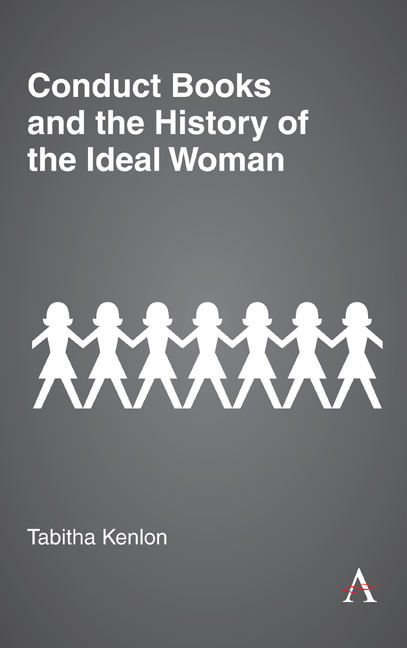Book contents
- Frontmatter
- Contents
- Acknowledgments
- Explanatory Note
- Introduction: Woman as She Should Be
- 1 A Good Woman Is a Godly Woman, Obviously
- 2 Conduct for Those Who Are Not Queen
- 3 Look but Don’t Talk: Reflections of the Ideal
- 4 Playing the Part as Nature Intended
- 5 Victoria’s Angels
- 6 Suffrage, Little Wives and Career Girls
- 7 Feminism Changes Everything, Right? Right??
- Coda: An Ideal End
- References
- Index
- Frontmatter
- Contents
- Acknowledgments
- Explanatory Note
- Introduction: Woman as She Should Be
- 1 A Good Woman Is a Godly Woman, Obviously
- 2 Conduct for Those Who Are Not Queen
- 3 Look but Don’t Talk: Reflections of the Ideal
- 4 Playing the Part as Nature Intended
- 5 Victoria’s Angels
- 6 Suffrage, Little Wives and Career Girls
- 7 Feminism Changes Everything, Right? Right??
- Coda: An Ideal End
- References
- Index
Summary
The woman who reigned during the heyday of the cult of domesticity and the feverish glorification of motherhood thought babies resembled frogs. Queen Victoria had nine of them (babies, not frogs), so her opinion was formed through intimate experience. Despite their shortcomings as infants, the queen loved her children, writing them letters when they married into various royal houses that scattered them across Europe and recording a touching account of her youngest child's wedding, admitting that though it was the ninth such event, “I think I never felt more deeply than I did on this occasion […] When the Blessing had been given, I tenderly embraced my darling ‘Baby.’ “ Yet her delight in matrimony was not unequivocal. She wrote to her eldest daughter in May 1858, “I think people really marry far too much; it is such a lottery after all, and for a poor woman a very doubtful happiness,” and returned to the subject a few months later, observing, “I think unmarried people are very often very happy— certainly more so than married people who don't live happily together of which there are so many instances.” Victoria's discontent with marriage might have been caused by the recent departure of her firstborn to live with her new husband in Germany, but Victoria's doubts align more with nineteenth- century confusion about women and marriage than with the myths of domestic bliss being peddled at the time.
Historians of the nineteenth century regularly point out the tremendous changes that took place during Queen Victoria's 64- year reign (1837– 1901) and the lasting affect they have had, even to the present day.Attitudes toward men, women and the institution of marriage were expressed and debated in terms that will be familiar to modern readers. While many essayists, politicians and advertisers argued that a woman's place was in the home, others pointed out the contradictions within the domestic ideology and proposed alternatives for women that included work and education opportunities, divorce, property rights and the vote.
Men Work, Women Comfort
Although writers had been declaring for centuries that men and women had different roles and responsibilities, the nineteenth- century concept of the inevitability of separate spheres was particularly vociferous and insistent.
- Type
- Chapter
- Information
- Conduct Books and the History of the Ideal Woman , pp. 105 - 132Publisher: Anthem PressPrint publication year: 2020



